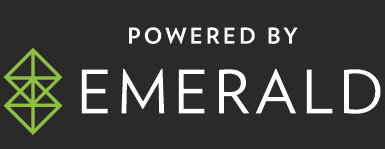Michael Pavone, CEO & Founder of Food & Beverage Agency, quench, Philadelphia, Shares His Thoughts
As we enter Q4, a traditionally busy time for food and beverage brands overall, the industry is wrestling with changes in consumer buying habits, particularly among the coveted Gen Z/Millenial demographic and how best to appeal to their diverse tastes and sensibilities.
We spoke with Michael Pavone, the CEO and Founder of Philadelphia-based food and beverage marketing agency quench, about what he’s seeing in 2025 so far and what that might portend for 2026.
Q: Let’s start with the beverage category. What alcoholic beverages (whether that’s by type or characteristics) are Gen Z looking for?
MP: Gen Z isn’t just sipping, they’re seeking. We’re seeing that in the trends that we’re tracking now and in the past. They’re drawn to experiences, so drinks that tell a story or align with their values, like craft cocktails or sustainable brands, are their go-tos. They want authenticity paired with a bold taste adventure.
Q: What are they not looking for? anything that previous generations have valued that they don’t?
MP: Gen Z isn’t impressed by tradition for tradition’s sake. Fancy labels or legacy brands don’t hold the same weight unless they resonate with their experiences. They gravitate away from unrelatable, status-centric marketing and toward products that speak to inclusivity and authenticity.
Q: How important are low/no alcohol versions for Gen Z?
MP: Very important. Low and no alcohol versions are more than a trend for Gen Z; they’re a lifestyle choice. The quench Food & Beverage Trend report started tracking the buzz-free alcohol movement back in 2021, and we’ve been watching it closely ever since. It all comes down to health. Gen Z values balance and wellness, and they’re rewriting the rules. They want options that allow them to engage socially without compromising their health goals.
Q: What’s the biggest change(s) to how Gen Z drink wine and spirits?
MP: Gen Z is transforming wine and spirit consumption through transparency and experimentation. They’re not afraid to challenge the norms, mixing and matching in unexpected ways, and valuing origin and process over brand prestige. It’s about exploration, not obligation.
Q: Tell us more about the idea of branded fusions in beverages.
MP: Branded fusions are all about unexpected delight. Imagine energy drinks collaborating with skincare brands, or a soda brand teaming up with a sneaker label. These mashups are engineered for culture. Social-first, limited-edition, and totally shareable. They turn beverages into moments, not just products, and in a world of short attention spans, that moment matters.
Q: Switching to food and beverage more broadly, what are the strengths, weaknesses, threats, and opportunities you see affecting food, bev, and restaurant brands over the next 6 months?
MP: There’s real momentum right now. Brands that lean into function, transparency, and bold flavor innovation are thriving. Consumers aren’t just looking for something that tastes good; they want drinks and snacks that support their health, boost their mood, or help them unwind. They’re also paying close attention to ingredients, sourcing, and values, choosing brands that feel honest, purposeful, and aligned with their lifestyle.
Consumers are also watching their wallets. With appetite-suppressing drugs like GLP-1s becoming more common and ongoing economic pressure, we’re seeing fewer impulse buys and more intentional, portion-conscious eating. That’s a real challenge for indulgent or oversized products that don’t adapt.
The opportunity lies in personalization and storytelling. If your product fits someone’s goals—health, mood, sustainability—and you communicate that clearly, you’ve got a much better chance of standing out and staying in the cart.
Q: How are you advising clients in this current economic climate? Tariffs effects on the sector? Other issues you see ahead potentially?
MP: We’re telling clients two things: be nimble and be real. Tariffs, supply chain bumps, and inflation are tightening margins across the board, but that doesn’t mean you pull back. It means you refocus. Simplify SKUs, double down on your hero products, and get crystal clear on your brand’s why.
We’re also encouraging brands to stay alert to cultural shifts, especially around health and portion size. Appetite is literally changing. With GLP-1 drugs and shifting wellness priorities, people are rethinking how much, when, and why they eat. That’s a massive opportunity if you’re ahead of it and a real risk if you’re not.
Q: Anything else on your mind?
MP: As an agency, we always remind clients that your product is just the start. You have to figure out what story it tells and then tell that story boldly, consistently, and everywhere it matters. Today’s consumer wants transparency, function, and flavor, but they also want connection. Whether it’s a smart bottle with a story or a wellness tonic with a mission. Always lead with authenticity and don’t underestimate the power of a great flavor name.


